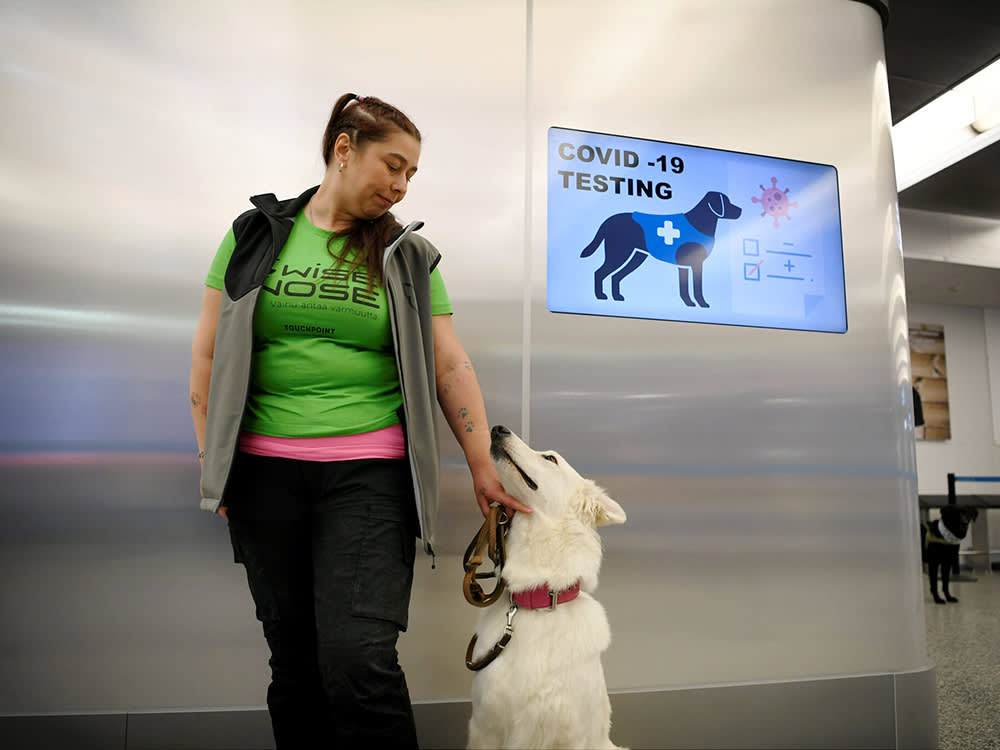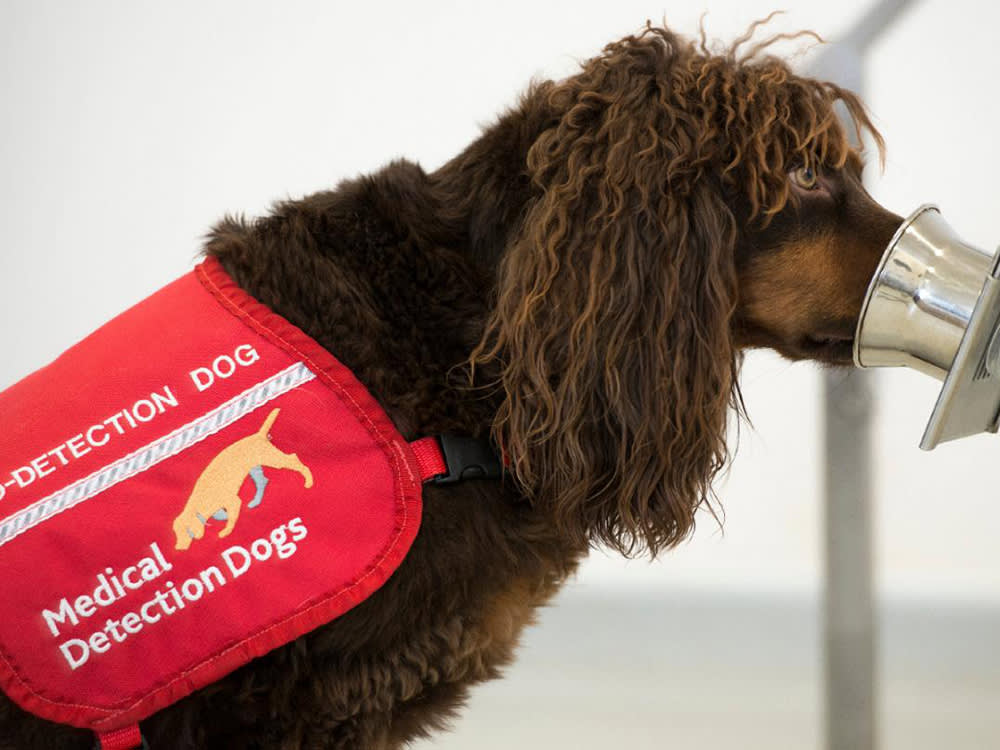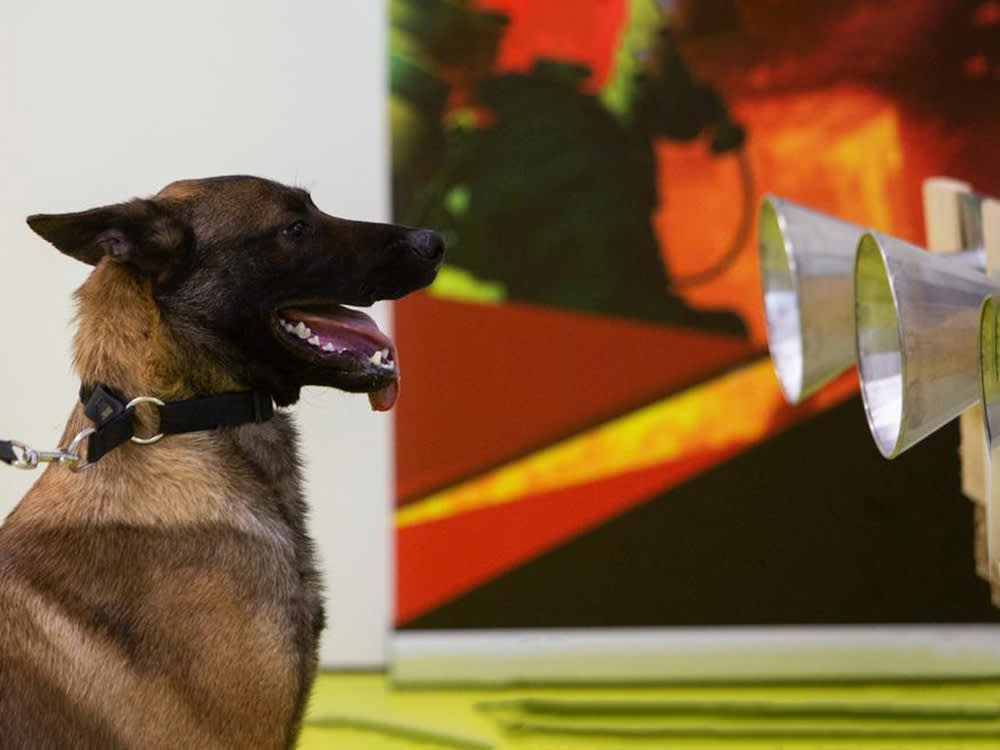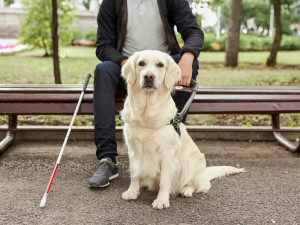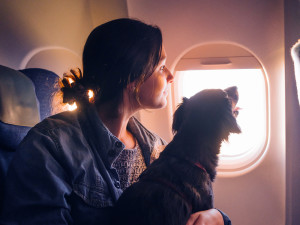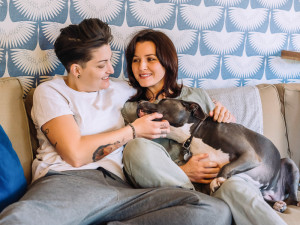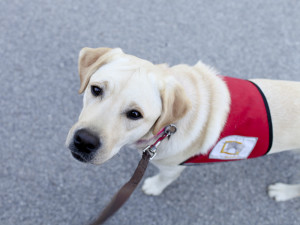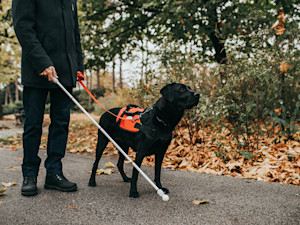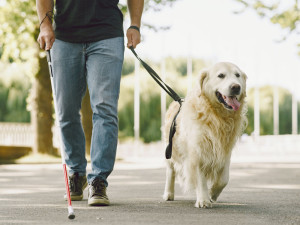COVID-19 Isn’t Going Anywhere. Enter Dogs Who Can Sniff It Out
The answer to every (seemingly never-ending) crisis: Dogs.
Now that bivariant COVID booster shotsopens in new tab are available, and official guidelines seem to change almost daily, it’s clear that this virus is something we are going to be living with for a while. We are also nearing the three-year (!) anniversary of its entrance into our lives, and experts feel it may be time to bring humanity’s best and most dependable friends into the fight against COVID. Yes: we’re talking COVID-sniffing dogs.
Such a role isn’t so far outside a professional canine’s proven skillset: scenting contraband, finding missing children, possibly even detecting undiagnosed cancer. Recent studies show they might be remarkably successful in detecting COVID, too.
Trick question: All dogs are perfect! But find out which type is the best fit for you.
This summer, the journal PLOS Oneopens in new tab published a study by Dr. Dominque Grandjean, of France’s Alfort School of Veterinary Medicine, reporting that dogs correctly identified COVID-positive human sweat samples with 97 percent accuracy in a study sample of 335 people, and even found all 31 of the asymptomatic Covid cases among 192 people.
This kind of efficacy rivals that of nasal-swab tests, and another journal, Science Newsopens in new tab, shared accounts of dogs actually beating the PCR test, detecting COVID in asymptomatic patients a full 48 hours earlier than PCR swabs did.
Some experts — called bio-dog medical scent detection trainers — say they weren’t surprised by the striking results. “It’s on par with what I would expect from a well-trained bio dog,” certified bio-dog trainer Ariel Vergel explains to Kinship via email. “High sensitivity and specificity results — with a delightfully non-invasive collection process.”
How much do you spend on your pet per year?
A Job That Makes Sense
Another certified bio-dog trainer, Melissa Russell, likens the challenge a COVID-sniffing dog would face to discerning cancer, diabetes, or epilepsy. “I do feel that the efficacy [for COVID-detection] is there,” says Russell, whose animals can detect cancer and diabetes in humans. “Dogs are highly, highly capable of picking out cancer from non-cancer, as well as drugs, bugs, different kinds of plants; it all matters what you train them to detect.”
In cases like cancer or diabetes, dogs are likely detecting some form of volatile organic compound (VOC) due to chemistry changes in the body caused by infection or mutation. “My teacher likened it to a suitcase,” Vergel says. “We may not know all of what’s inside, but if trained correctly, [a bio dog] can identify the common denominator between several ‘suitcases.’ And so long as they are accurately alerting on a repeated basis, we humans don’t really need to know which item it is to utilize their life-saving skills. We trust the training and the dog.”
“Dogs can smell the presence of a teaspoon of sugar in an Olympic-sized pool.”
—Certified bio-dog trainer, Melissa Russell
If detecting the microscopic coronavirus in a person standing a foot away sounds to you like a stretch, Russell says we underestimate the precision instrument that’s at the end of a dog’s snout. “Dogs can smell the presence of a teaspoon of sugar in an Olympic-sized pool,” she says. That said, COVID does present new challenges.
“COVID is so new that we still don’t really know that much about it,” she says. “People react to it in so many different ways, and the number of variables may make it difficult to train a dog against all of them.”
Unlike a nasal swab, a dog runs the risk of contracting COVID themselves. “According to the CDC websiteopens in new tab, dogs can contract it as humans can, and for us, the primary prevention method is the avoidance of inhaling the VOCs of others by avoiding close contact and using masks, Russell adds. “If the dog is directly inhaling an infected sample I would think their risk would be high for contraction.”
Nose Swabs Aren’t Going Anywhere
Russell says that COVID-positive sweat or other substances might be used for training instead of a sample of the live virus. She likens this to the training epilepsy-detecting dogs undergo: “They smell a hormone or something else that’s released prior to a seizure.” They can smell elevated levels of different agents, depending on what you train them for.”
As appealing as it would be to replace a sinus-gouging swab with a friendly sniff from a German Shepherd, COVID bio-dogs aren’t filling in for PCR tests any time soon. “The PCR tests are quick and efficient,” Russell says. “I don’t see dogs replacing them so much as augmenting virus detecting in public spaces. I can see them using dogs in airports, maybe, to initially get someone to take a test. The whole idea is not to replace PCR tests with dogs; we just want to be able to find it quicker, get an earlier warning.”
But like bomb-sniffing dogs, this would require an exceptionally high amount of training beyond the ability to detect the agent. “To be reliably alert in such an overwhelming environment, [the training needed for success] would by far surpass the five to six weeks training in the study,” Vergel says. “The sheer amount of scents alone would be enough to raise the difficulty level, but then there are also sights and sounds to be accounted for. High distractions can lower a dog’s focus, and thus their success rates.”
But Dogs Aren’t Out of the Question
A more likely scenario, Russell says, would be a canine-staffed testing facility in or near the building, adding that an ideal location would be “somewhere the animals could be reasonably isolated to better perform, while collecting samples on the spot from travelers, who would then be required to wait for their results before proceeding.”
Despite compelling results in cancer-detection studies — “anywhere from an 80 to 95 percent success rate,” Russell says — even cancer-detecting bio dogs are rarely used in the real world. “Right now, the only place I know of that’s using dogs to detect cancer is the Enloe Hospital,opens in new tab in Chico, California, and I believe Chicago has a program opens in new tab with their firefighters as well.”
“The canine olfactory sense is a heavily studied, repeatedly proven, and utterly underutilized medical tool humans could benefit from.”
—Certified bio-dog trainer, Ariel Vergel
For her part, Vergel isn’t holding her breath for this to take hold across the country. “I imagine we will not see very many dogs in action this fall. Proving their capabilities for diagnosis is one thing but, as in the world of cancer, that does not necessarily mean that these dogs and their handlers will be allowed to operate in this capacity.”
Were public health officials to employ COVID-sniffing dogs, she adds, “perhaps that would remove some of the obstacles currently preventing cancer detection from being used as a regular option for diagnosis. In that way, COVID-detection dogs could save a lot more lives than just those whose samples they actually sniff. For me that would be the most exciting result from this study. The canine olfactory sense is a heavily studied, repeatedly proven, and utterly underutilized medical tool humans could benefit from.”
It’ll be some time before troops of COVID-trained bio dogs march to battle a pandemic, so should we take matters into our hands and train our own dogs to sniff out COVID?
“Probably not,” Russell says with a chuckle. “There are more important health applications to train your dog for. Epilepsy, PTSD, stress — any of these would be a better use of your dog’s time.”
